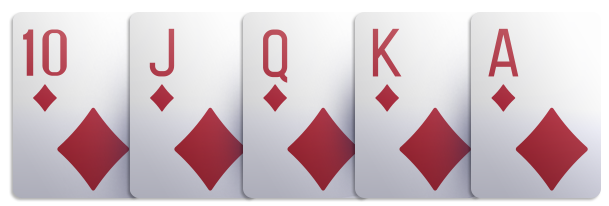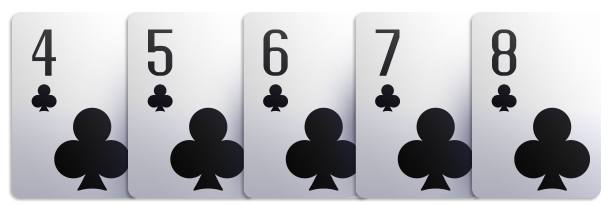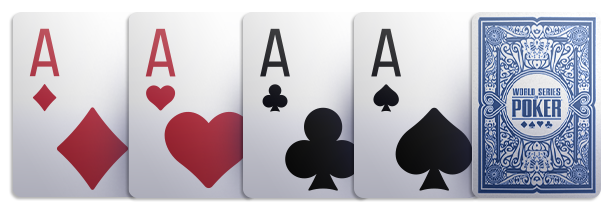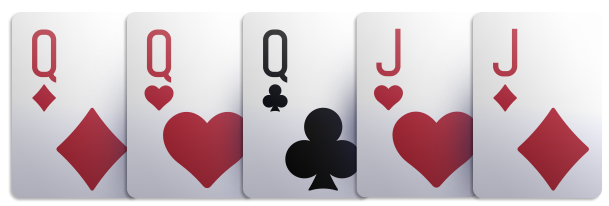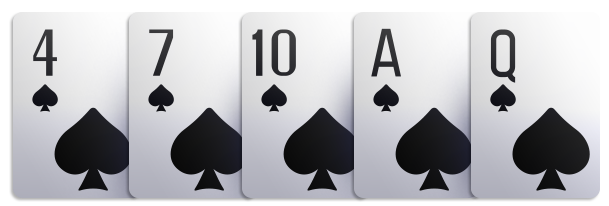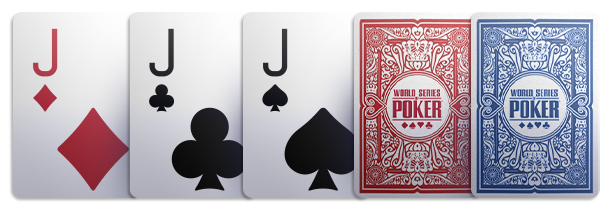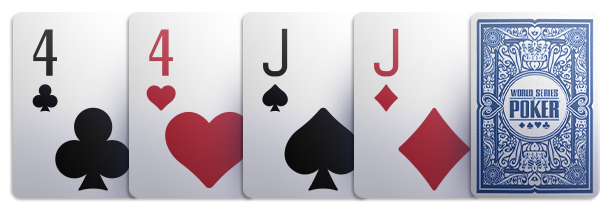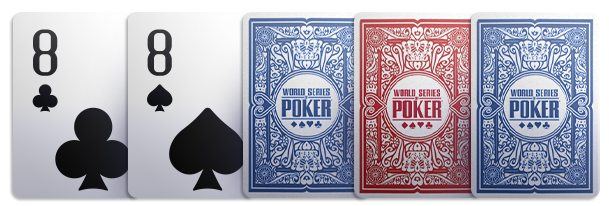You’ve probably heard of a full house in poker, but how do you make this high-ranking hand? Come with me, and I’ll explain the nuances of this hand, as well as how to play full houses like a pro.
What is Full House Poker Hand?
A full house is a poker hand that consists of a set and a pair. Put another way, you have three cards of equal value, as well as two cards of equal value, e.g., A♥ A♦ A♠ K♦ K♣.
When you’re declaring a full house at showdowns, the set gets named before the pair. For example, the hand listed above is called Aces full of Kings. If we replaced an Ace with a King (A♦ A♠ K♦ K♣ K♥), the hand would be declared as Kings full of Aces.
Where Does Full House Rank in Poker?
A full house is the fourth-best hand in poker. You’ll often see these hand winning showdowns because there aren’t many combinations that beat it. It’s also not as hard to make as other top-tier poker hands, which is why you’ll see it more often than quads and straight flushes.
Poker Hand Rankings
What Are the Odds of Making a Full House?
The odds of making a full house in poker when you deal five random cards is 1 in 694 hands. Or, if we’re talking percentages, there’s a 0.144% chance of making a full house with five random cards.
That’s the base number but, as we know, cards are dealt in different ways depending on the type of poker you’re playing. So, if you’re playing Five-Card Draw, it’s worth knowing that there’s a 0.144% chance your first five cards will make a full house.
However, if you’re playing Texas Hold’em or Omaha, you need to know the odds of hitting a full house on the flop, turn, and river based on your hole cards.
Working through the various permutations of full house odds in Omaha is tricky because you have four hole cards. So, to keep things simple, we’ll focus on Hold’em.
If you’re playing Omaha, just look at the odds below and know that they’re going to be shorter. That’s because you’ve got twice as many cards to work with. For example, if you’ve got a 0.144% chance of flopping a full house in Hold’em, you’ll have a better chance in Omaha.
Now that’s clear, here are the odds of making a full house in Texas Hold’em:
- The chances of flopping a full house with any starting hand = 0.144%
- The chances of flopping a full house with an unpaired hand = 0.09%
- The chances of flopping a full house with a paired hand = 0.98%
Chasing a full house after the flop requires you to have two pair or a set (three-of-a-kind). Based on these two conditions, the odds of hitting a full house by the turn and river are:
Two Pair
- The chances of hitting a full house on the turn with two pair on the flop = 8.5%
- The chances of hitting a full house on the river with two pair on the turn = 8.7%
Three-of-a-kind (set)
- The chances of hitting a full house on the turn with three-of-a-kind on the flop = 12%
- The chances of hitting a full house on the river with three-of-a-kind on the turn = 18%
You’ve got a better chance of hitting a full house going from the turn to the river because there’s an extra card that could be paired. Here’s an example to explain this:
- The board is Q♠ 8♠ 2♥ 5♦
- We’ve got 8♦ 8♥
In this situation, we could hit a full house if these cards land on the river: Q♥, Q♦, Q♣, 2♦, 2♣, 2♠, 5♥, 5♣, 5♠. We’ve got nine cards to a full house. To calculate your odds with one card to come, you multiply the number of outs by 2.
On the flop, we’ve got six outs (Q♥, Q♦, Q♣, 2♦, 2♣, 2♠), which gives us a 12% chance of hitting a full house on the turn. On the river, we’ve got nine outs, which gives us an 18% chance of hitting on the river.
How to Play a Full House: 3 Basic Strategy Tips
Getting to a showdown with a full house is half the battle with this poker hand. It’s good enough to win the majority of showdowns, so you need to find the right balance between juicing up the pot and trapping players.
If you can manage this, you’re well on your way to getting maximum value from a full house. Three other things to keep in mind are:
-
Don’t Be Afraid to Bet Big: the board needs at least a pair for you to make a full house, which means opponents are likely to have something they can call bets with. Because of this, you shouldn’t play too passively when you’ve made a full house.
-
You Might Be Ahead Already: you’re probably already ahead when you’re chasing a full house because you’ve either got a set or two pair. Again, this gives you the freedom to bet aggressively while giving opponents just enough incentive to stay in the pot.
-
Full House Over Full House is Rare: don’t worry about losing to another full house. It can happen, but a thread on the 2+2 forum has some calculations that show the chances are less than 10%.
Mistakes to Avoid with a Full House
It’s hard to make mistakes with a full house because it’s such a strong poker hand. The only thing I’ll say is to make sure you remember the value of your full house. Use the X full of Y rule, where X is your three-of-a-kind and the Y is your pair. This ensures you know exactly how valuable your full house is in the unlikely event that someone has a stronger one.
Conclusion: How to Play a Full House in Poker
That’s how to make a full house in poker and, more importantly, how to play it correctly. The odds of flopping a full house are fairly long, but they’re considerably shorter than quads and straight flushes. Therefore, you’re likely to get this hand a few times when you’re playing cash games and tournaments online.





